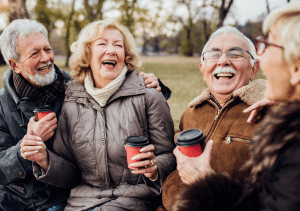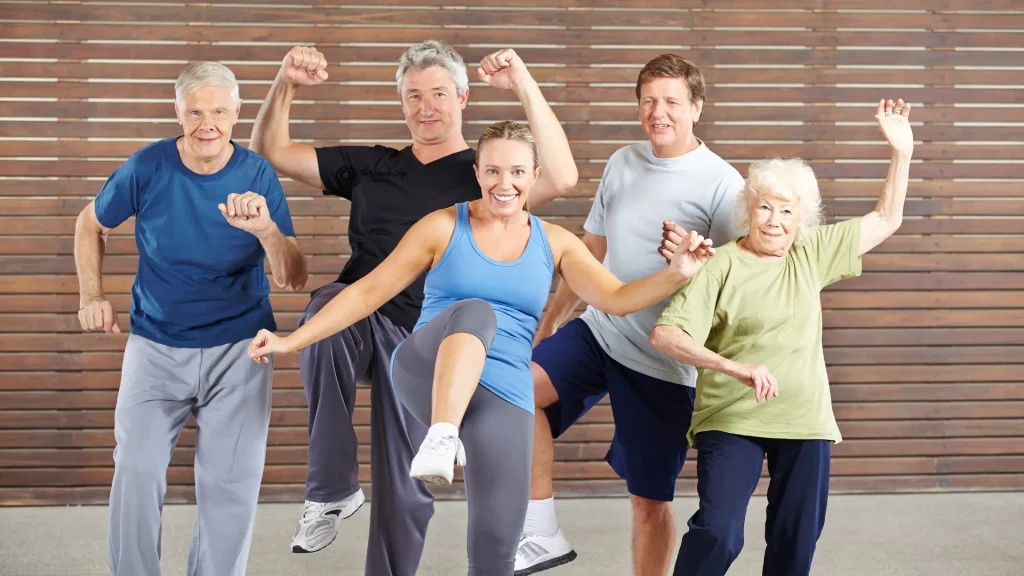Is there such a thing as Active Aging? With aging comes the worry of declining mobility and strength, which can make us rely more on others for help and feel like we’re losing some of our independence.
Aging is a normal part of life, and as we get older our bodies weaken, becoming more vulnerable to injury. But here’s the thing: aging doesn’t have to mean a slow decline into frailty. In this blog, I’ll delve into the concepts of active and passive aging and provide you with 5 practical steps to help you age gracefully, live with more energy, and experience greater happiness.
Active Aging vs Passive Aging: Your Choice Matters
We often hear about “active aging” and “passive aging,” but what exactly do these terms mean?
Let’s break it down. Active aging isn’t just about staying busy; it’s about staying physically, mentally, and socially engaged. Whether it’s adopting an exercise routine to improve balance, building lean muscle mass, or ensuring you stay socially connected.
On the flip side, there’s passive aging, which is more about letting life happen to you rather than taking an active role in shaping it. Passive aging can lead to a sedentary lifestyle, where physical activity dwindles and mental stimulation weakens. It is a path that often results in declining health, reduced quality of life, and a sense of disconnection from the world.
The choice between active aging and passive aging is yours to make. However, if you opt for active aging, there’s good news – I have 5 practical and simple steps you can take!
5 Practical and Simple Steps to Active Aging
1. Invest in a routine that improves the big 4 of physical activity – fitness, flexibility, strength, and balance:
- Maintaining fitness is critical for your cardiovascular health as you age.
- While flexibility helps you keep your muscles supple and your joints mobile.
- Falling over can be a serious issue as you age – having a fall often results in fractures. This frequently leads to disability, further health problems, or even death. Shockingly, experts estimate that up to 33% of all older adults who have suffered hip fractures will die within a year (and even higher rates of death among those with dementia or those who live in a nursing home). While safety precautions are important, the best way to reduce the risk of falling is to incorporate exercises to improve your balance and strength.
Take action and Consult one of our experienced and passionate physiotherapists for an individually tailored balance and strength training routine. If you have underlying medical conditions you’ll need to visit your doctor for a check-up before starting a new physical exercise routine.

2. Adopt a routine of sustainable and fun activities
This is where some people can tend to overdo it. Active aging isn’t about excessive exercise. It’s about consistency, doing the right exercise for you and making sure you enjoy it! Overexertion or the wrong type of exercise can lead to pain and injury. Consistently taking a simple walk around the park would be more beneficial than running a marathon every few months. That’s why it’s important to collaborate with your physiotherapist to develop a sustainable activity routine and stick to it.
3. Stay connected and involved
Active aging isn’t just about staying physically fit; it’s also about maintaining social connections. By staying connected and involved, you’re adding richness and meaning to your life. Whether it’s catching up with family, joining a book club, or volunteering, make time for the things that light you up. These connections and activities keep you engaged and fulfilled. If you are caring for a loved one, it is especially important to maintain social connections and continue activities that light you up.
4. Keep your brain active and healthy
Learning a new skill keeps your brain working and may protect you against dementia. Depending on where your preferences lie, this could be learning a musical instrument, learning a new language, developing your computer skills or doing a creative activity like painting.
5. Refine your health and wellbeing routine
- Consider including Infrared saunas in your health and wellbeing; they can be effective in reducing pain and helping to improve sleep.
- Stay hydrated. Cut back on caffeine and alcohol. Ensure you’re drinking enough water (and make sure it’s filtered to get rid of all the potential chemicals and any nasties).
- Floss your teeth for healthier gum and even a healthier gut (gum-disease bacteria can travel to your gut and affect the balance of bacteria there).
Conclusion
To reduce the risk of developing the aches and pains that many people associate with aging, a tailored management plan from a physiotherapist that caters to your current level of fitness, mobility, balance and strength can make all the difference.
At The Wellness Edge, we take the time to understand your unique needs, abilities, and goals to develop a comprehensive plan that addresses your specific challenges and promotes your independence. Aging no longer has to leave you weaker and feeling like you’re losing your independence. With the right plan, the right attitude, and commitment to aging well, you can improve balance, build lean muscle and feel more energetic!
Take the first step toward a healthier and more active future by consulting one of our experienced physiotherapist today.

